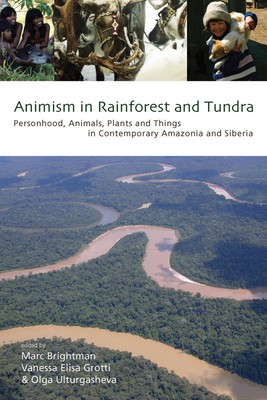
- We will send in 10–14 business days.
- Publisher: Berghahn Books
- ISBN-10: 0857454684
- ISBN-13: 9780857454683
- Format: 15.2 x 22.9 x 1.4 cm, hardcover
- Language: English
- SAVE -10% with code: EXTRA
Animism in Rainforest and Tundra (e-book) (used book) | bookbook.eu
Reviews
Description
Amazonia and Siberia, classic regions of shamanism, have long challenged 'western' understandings of man's place in the world. By exploring the social relations between humans and non-human entities credited with human-like personhood (not only animals and plants, but also 'things' such as artifacts, trade items, or mineral resources) from a comparative perspective, this volume offers valuable insights into the constitutions of humanity and personhood characteristic of the two areas. The contributors conducted their ethnographic fieldwork among peoples undergoing transformative processes of their lived environments, such as the depletion of natural resources and migration to urban centers. They describe here fundamental relational modes that are being tested in the face of change, presenting groundbreaking research on personhood and agency in shamanic societies and contributing to our global understanding of social and cultural change and continuity.
EXTRA 10 % discount with code: EXTRA
The promotion ends in 17d.11:53:29
The discount code is valid when purchasing from 10 €. Discounts do not stack.
- Publisher: Berghahn Books
- ISBN-10: 0857454684
- ISBN-13: 9780857454683
- Format: 15.2 x 22.9 x 1.4 cm, hardcover
- Language: English English
Amazonia and Siberia, classic regions of shamanism, have long challenged 'western' understandings of man's place in the world. By exploring the social relations between humans and non-human entities credited with human-like personhood (not only animals and plants, but also 'things' such as artifacts, trade items, or mineral resources) from a comparative perspective, this volume offers valuable insights into the constitutions of humanity and personhood characteristic of the two areas. The contributors conducted their ethnographic fieldwork among peoples undergoing transformative processes of their lived environments, such as the depletion of natural resources and migration to urban centers. They describe here fundamental relational modes that are being tested in the face of change, presenting groundbreaking research on personhood and agency in shamanic societies and contributing to our global understanding of social and cultural change and continuity.


Reviews